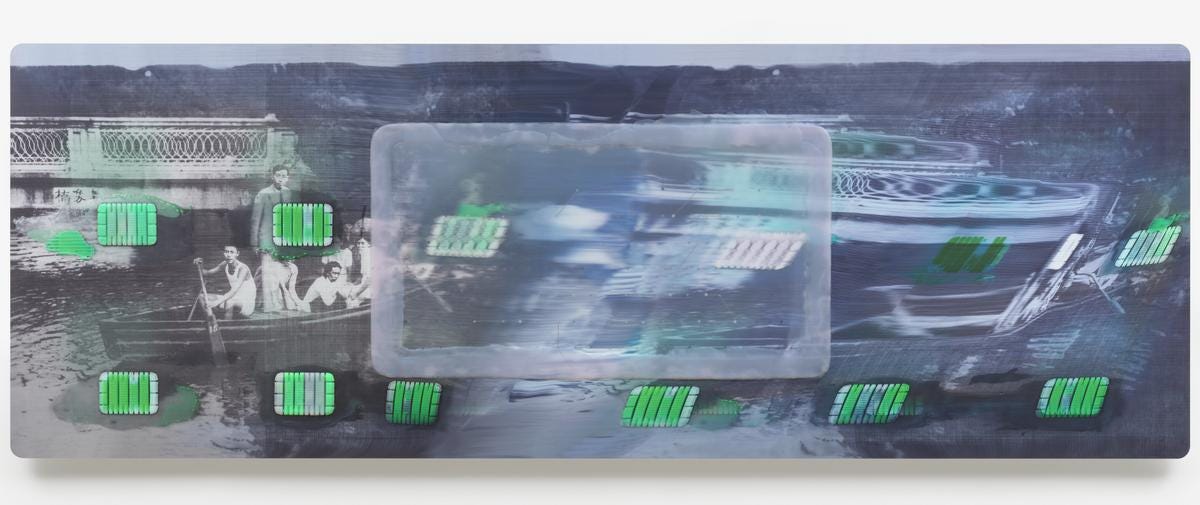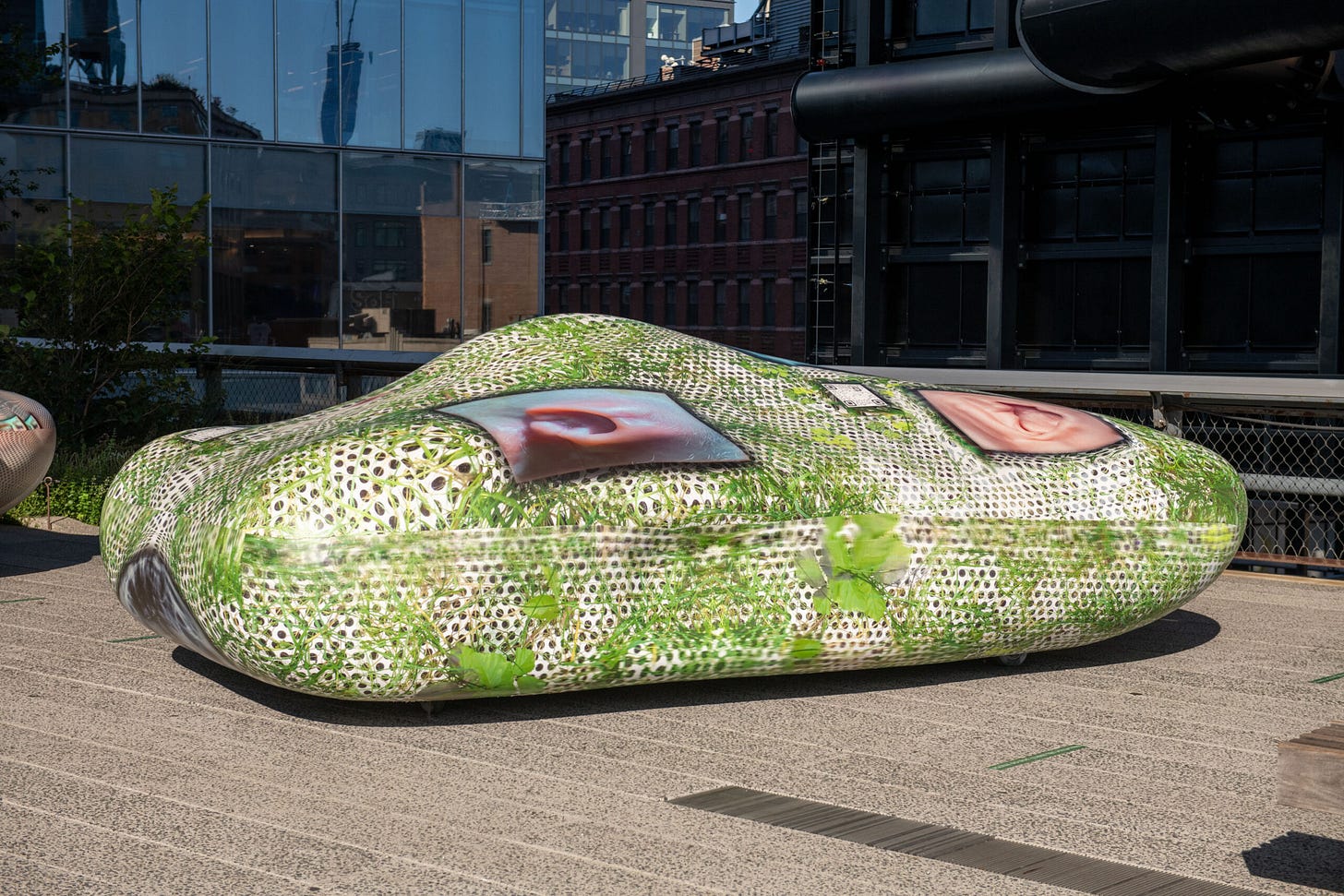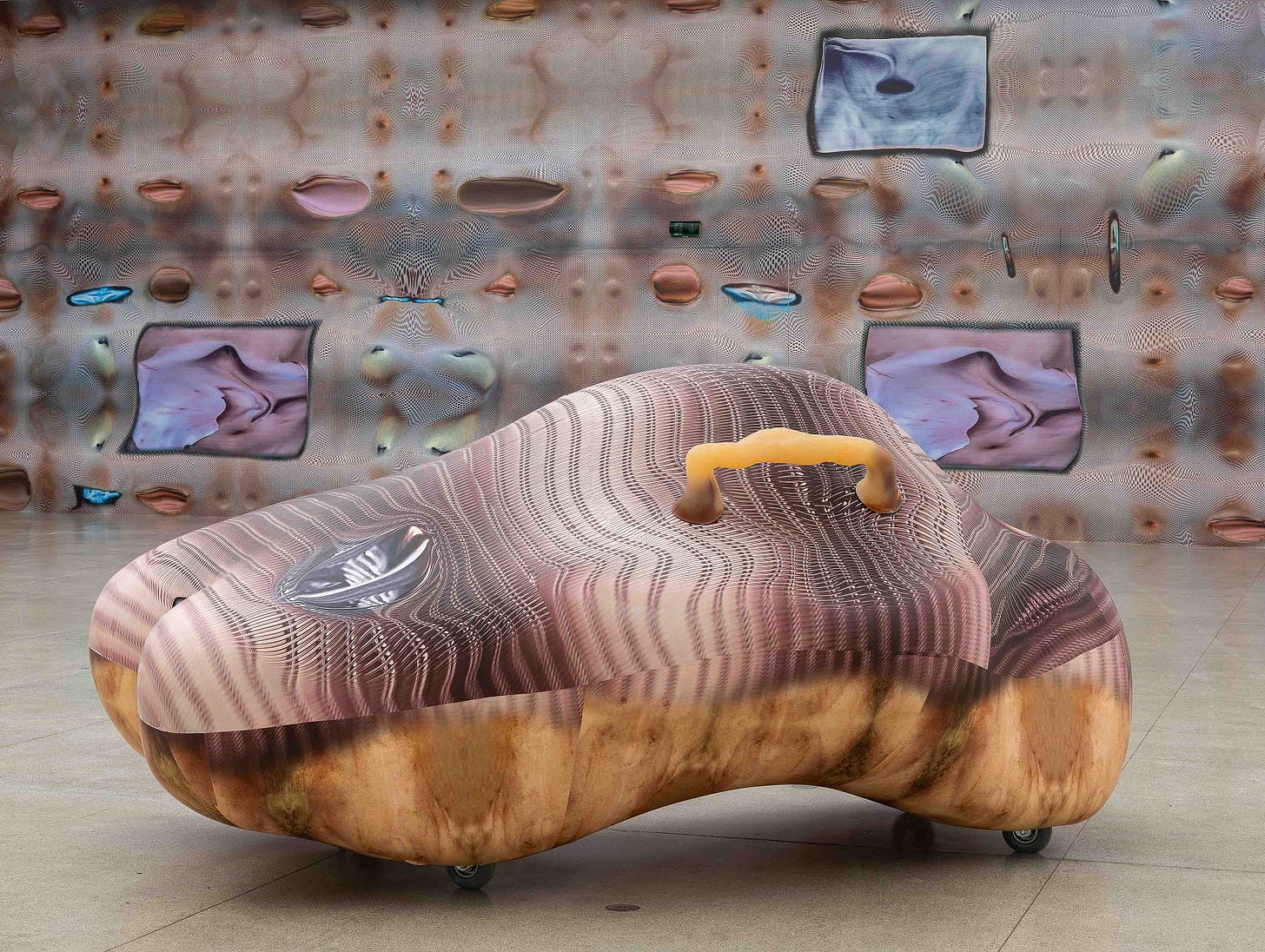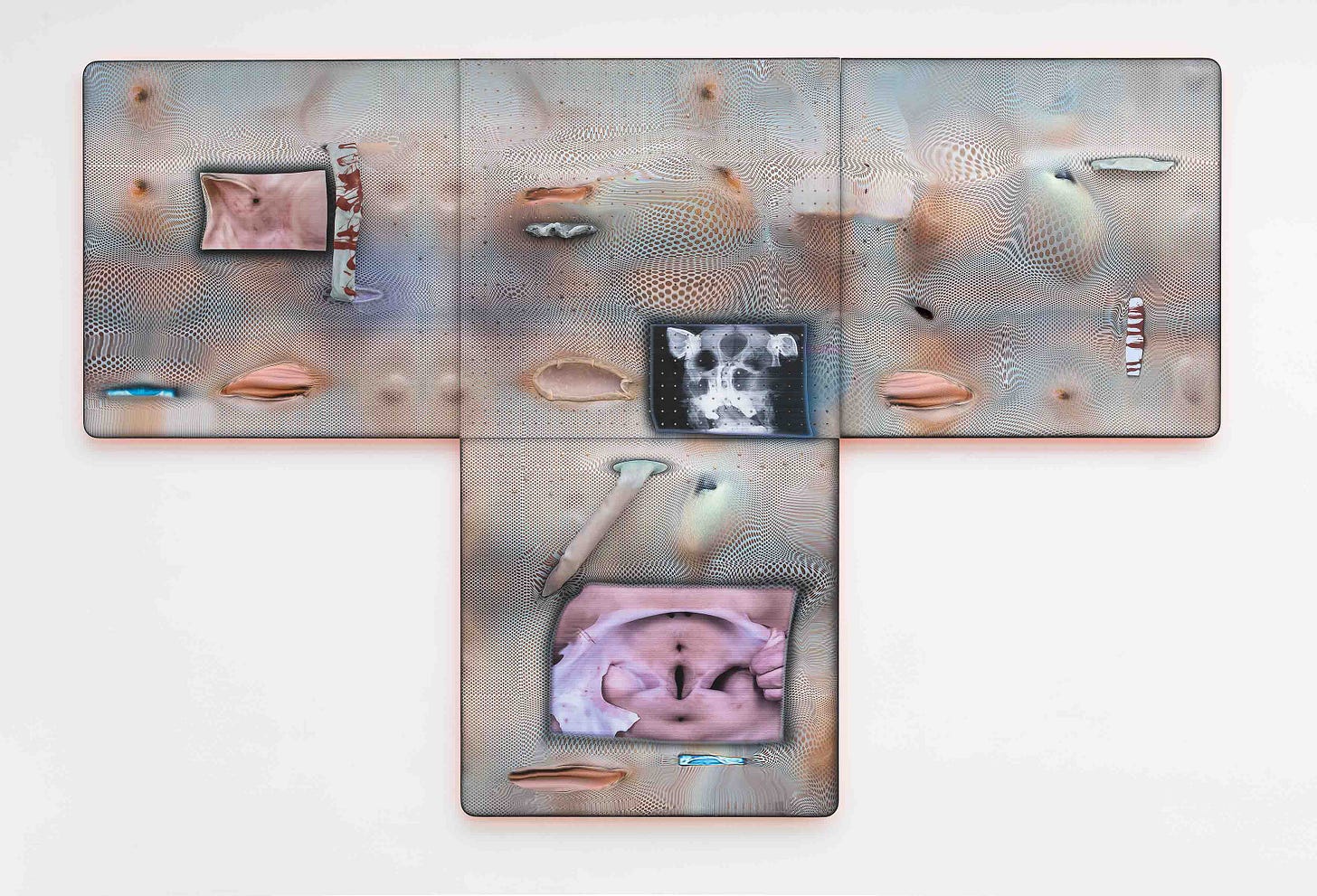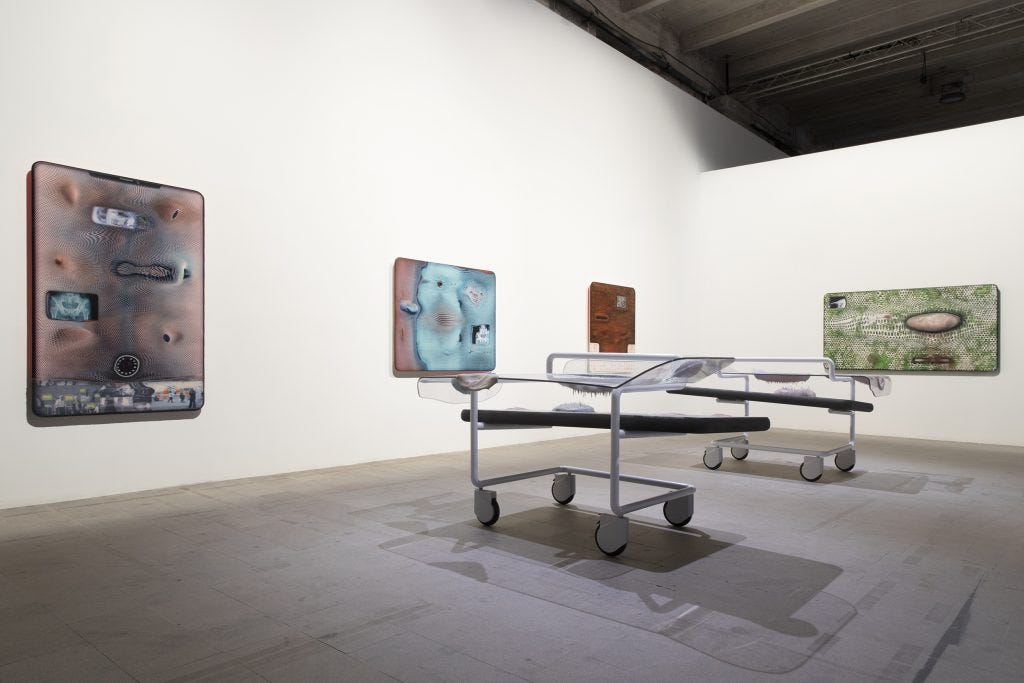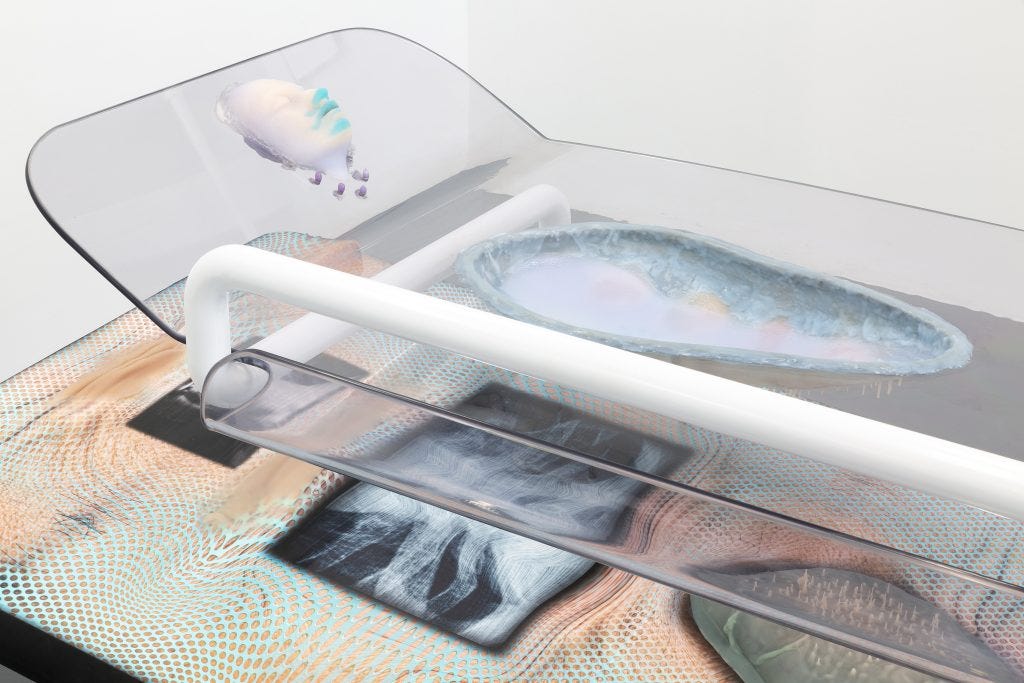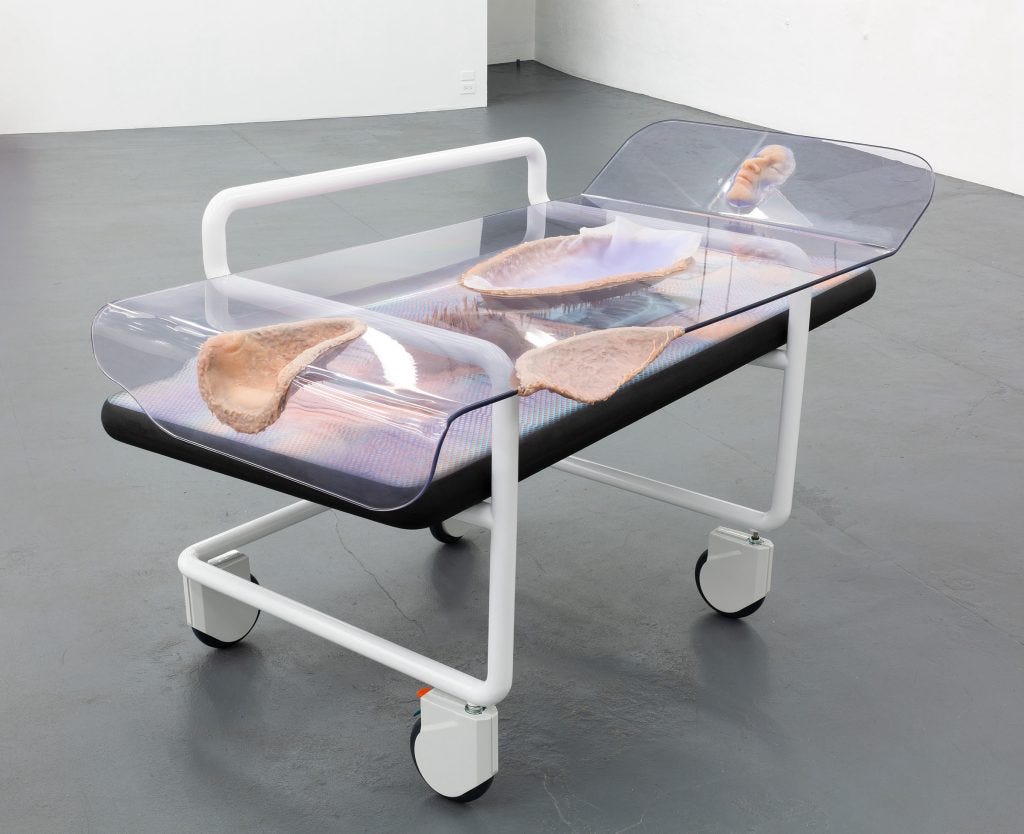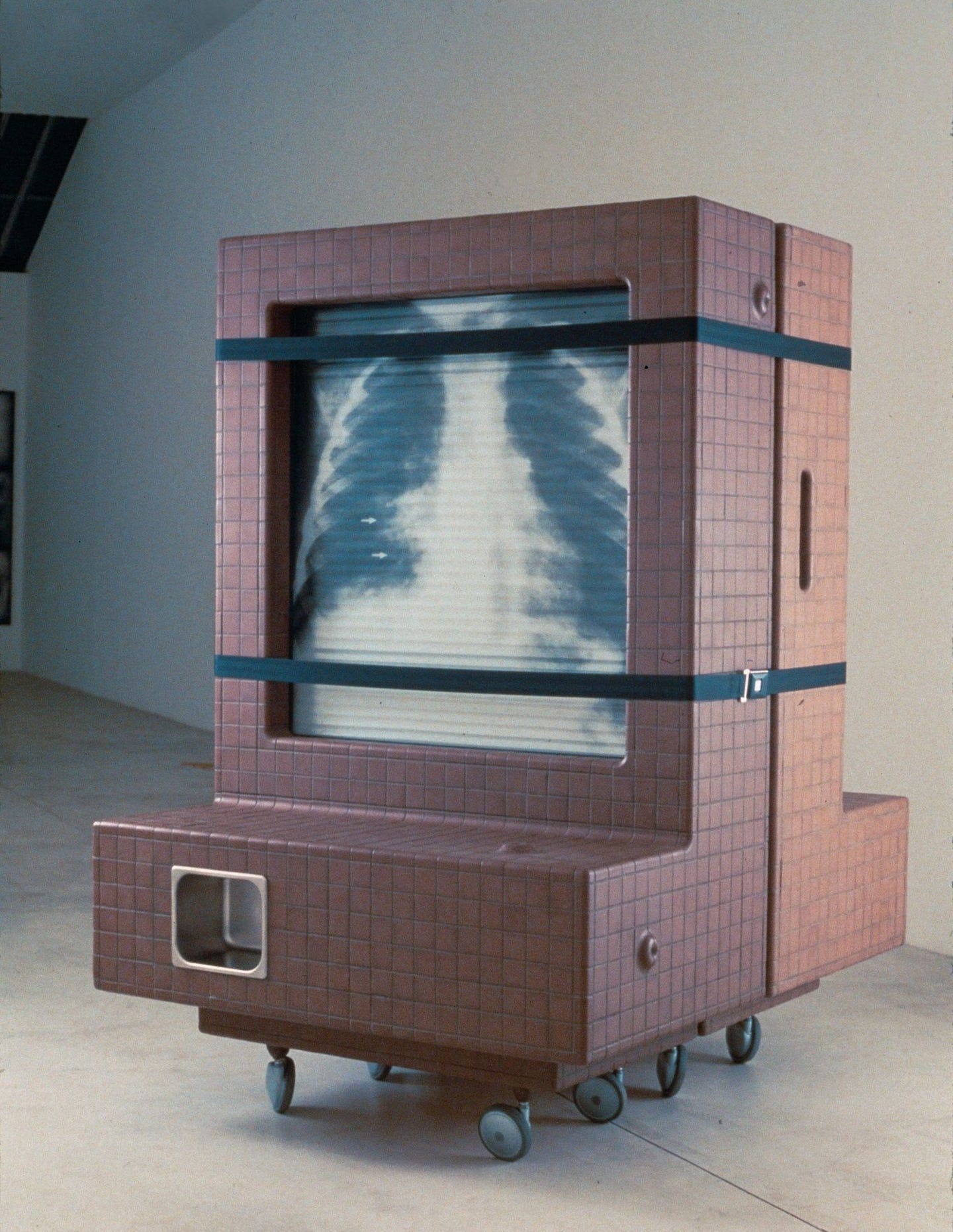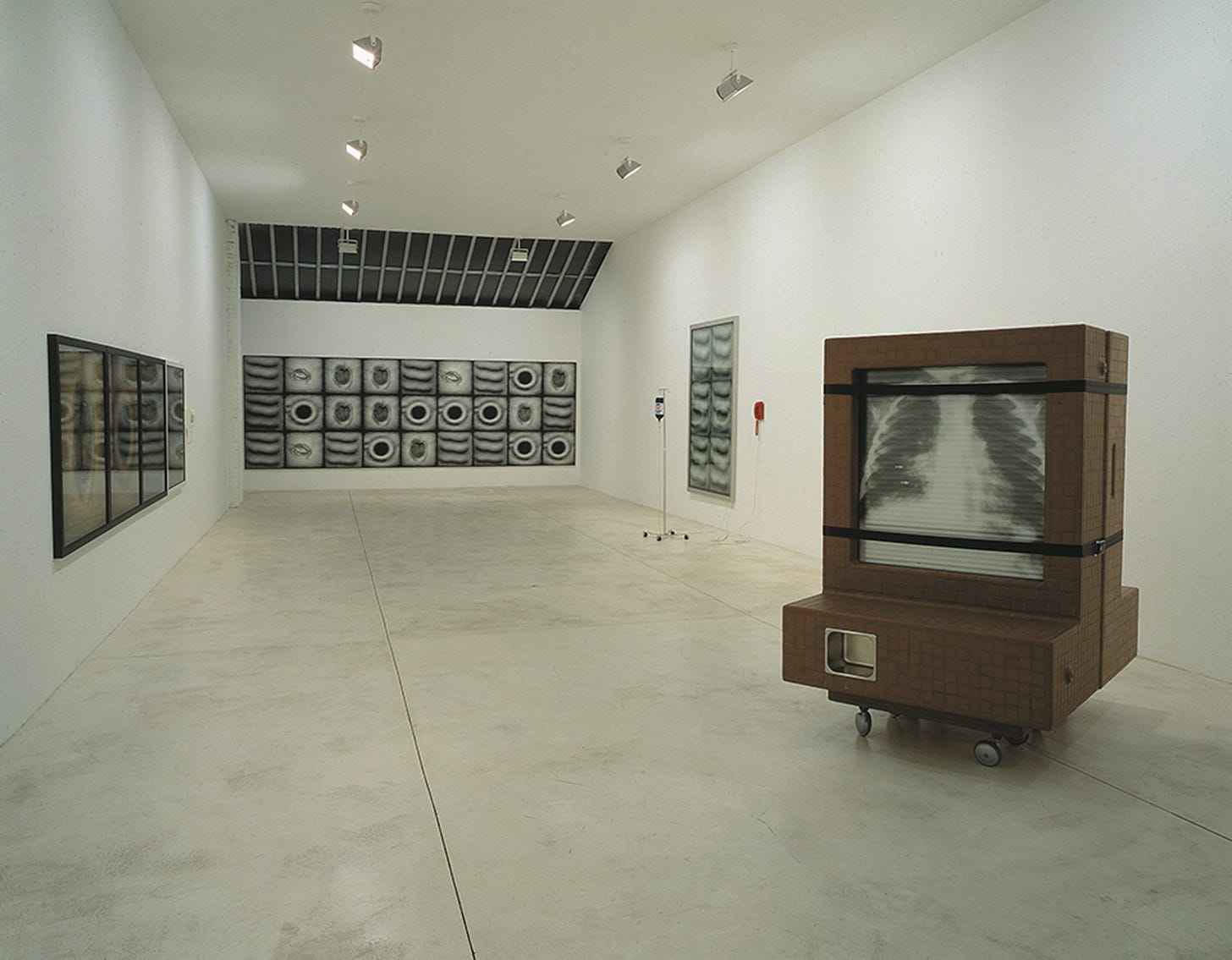Tishan Hsu
Boating Scene 1.2.2, 2019 | Boating Scene 1.1.2, 2019 | car-grass-screen-2 and car-body-screen-2, 2024 | mammal-screen, 2023 | ears-screen-skin: Vienna, 2023 | & more...
AS I WAS MOVING AHEAD OCCASIONALLY I SAW BRIEF GLIMPSES OF BEAUTY is a very simple newsletter where I share a collection of creative expressions I enjoyed coming across.
My concerns in the work were about the body and technology; it was very simple. Many people asked me if I was trying to imagine a future. I felt I was responding to what I saw in the present.
Tishan Hsu
Since the mid-1980s, Tishan Hsu’s prescient artistic practice has been probing the cognitive as well as physical effects of transformative technological advances on our lives. Through the use of unusual materials, software tools, and innovative fabrication techniques, his enigmatic paintings and sculptures explore and manifest poetic new ways to engage and reimagine the human body.
After studying Environmental Design and Architecture at MIT in the 1970s, Hsu rose to prominence during New York’s East Village era with a quick series of exhibitions at the Pat Hearn Gallery and a 1987 show with Leo Castelli.
"Looking back," Hsu notes, "the evolution of imaging software, printing technologies, new materials, sensor technology, video and sound have enabled the work to unfold in clearer and more radical ways. The sensibility needed the technology. There has been a synchronicity that I did not expect."
From early on Hsu’s work began to reflect his “assessment that technology was becoming an extension of the human body," as Julie Belcove writes, which is “a condition he concluded was destined to intensify over time. Modular tiles in his sculptures echoed bits of digital data; three-dimensional objects hinted at contraptions yet to come. Paintings evoked computer monitors but also blood cells or flesh." The body, Hsu came to realize, could no longer be represented the way it had been for centuries. He was seeing the future.
Miguel Abreu Gallery
[Hsu] landed a part-time night job as a word processor at a Wall Street law firm, where he worked with the early use of the screen in word processing, giving him first-hand insight into the interaction between user and machine. On his off-hours, he began the exploration of how to visually convey the situation of his body interacting with the computer screen. The diversity of materials that Hsu employed (wood, vinyl cement compound, ceramic tiles, polystyrene, resin, rubber) constituted his aesthetic vocabulary at the time, bringing an unsettling sense of reality to the notion of the interface: the skin, membranes and screens where information and perception meet – or take shape. […]
At a time when technology is increasingly an extension of the body, the presence of machines in Hsu’s oeuvre is becoming ever vaguer and more unclear: skin and screen intermingle, merge and combine until, eventually, they become one.
MAMCO GENEVA
In 2006, Hsu encountered a life-changing experience that reaffirmed and echoed his practice of negotiating the body’s merging with foreign objects: He received a kidney transplant. “When I entered the surgical theater, I thought, this is the most intense installation I have ever experienced,” Hsu says.
Rob Goyanes, Artsy



